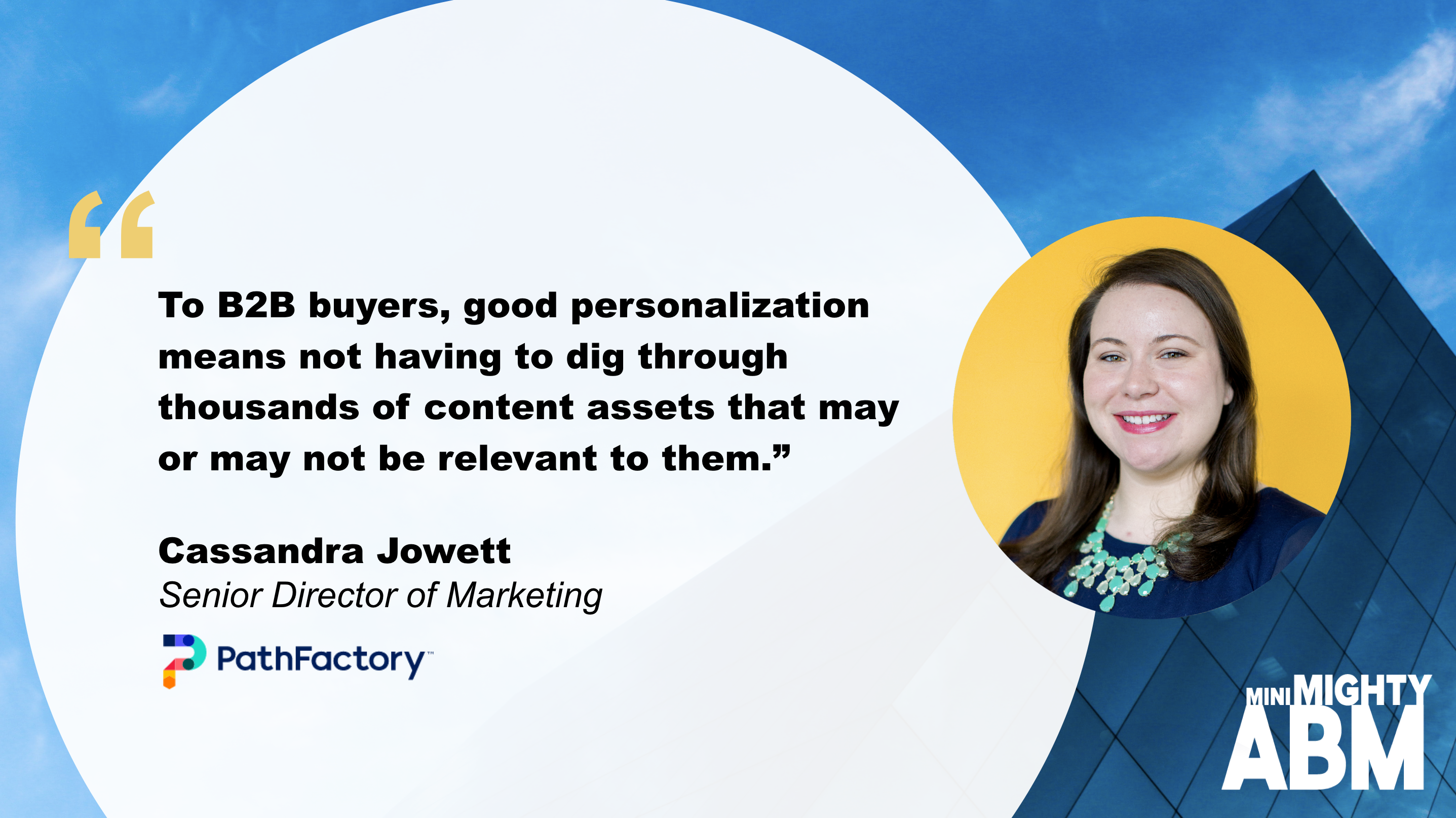How to Create Personalized Content Journeys
Mini Mighty ABM

This article is part of the Mini Mighty ABM series where we ask top experts in ABM to share one actionable idea that you can use at work today. These tips are mini, but mighty. For more, visit ABM Revealed.
ABM couldn’t have come at a better time because B2B is undergoing a process of consumerization. At home, buyers are surfing Netflix, shopping Amazon, and streaming Spotify, and they’re bringing those expectations of ease and algorithm-driven relevance to work with them. Many are wondering, why is B2B buying still so hard?
The average B2B buyer engages in a crazy scavenger hunt for information, collecting and consuming piles of white papers, articles, and webinars that may or may not be relevant to them. Standing apart and beating your competitors is increasingly a function of how well you can capture and activate data to make the buying experience simpler.
In this article, I’ll examine how Melissa Alonso, Director of Global Strategic ABM at Qlik, used a combination of data and personalization tools to double her results.
It takes a village
Ever visited a company website that was beautiful, but vague, and made you wonder what exactly they do? There are lots of reasons this happens, but a big one is that companies often have lots of target buyers and in an effort to address everyone, they settle on generic phrases that speak to no one.
When Melissa’s team began their ABM journey, they noticed their own website suffered from this to a small degree. Their homepage image was interesting, but it didn’t educate visitors or help them understand why they, in particular, should buy. “The image was similar to our ads and there was a form to fill out, but it didn’t offer any value,” says Melissa. “My goal for many years was to focus on these form fills, but we got to thinking, maybe that’s not the best way to guide people.”
Melissa and the team made a few changes. They:
1. Selected segments
Melissa and the team picked four industries to personalize to—financial services, healthcare, life sciences, and retail, with a fifth bucket for a general audience.
2. Personalized their creative throughout the funnel
They engaged an ad agency to produce ads with copy and images to fit each vertical (for example, saying ‘patient outcomes’ rather than ‘business results’) and set their ABM advertising software to dynamically insert the company’s name into each ad. Then, they continued that personalization by vertical through the landing pages and recommended vertical-specific content on the site.

3. Measured lateral and downstream effects
Melissa and her team’s past process had forced prospects into paths which, while measurable, had more steps than were necessary. “We knew we had to think beyond the form-fill,” says Mellissa. “We stepped back to think about the big picture and provide more relevant content earlier, allowing them to educate themselves, and not forcing them to convert.”
The results were more difficult to measure—in some cases, the team had to use IP-targeting to see which accounts saw ads, didn’t click, but then visited the site. They also had to measure the ‘binge rate,’ or the number of visitors who consumed more than one asset. But the results paid off. Melissa’s team earned:
The outcome was clear: B2B buyers want more consumer-like personalization and to do less work hunting for the assets relevant to them. The more you can use data to personalize that journey, the more they engage.
My actionable takeaway:
B2B is undergoing a process of consumerization. To win at ABM, you have to redesign your journey to benefit the buyer and use data to serve up relevant assets.

Cassandra Jowett
Senior Director, Marketing, Pathfactory
With a background in journalism and a decade of experience in early- and growth-stage startup marketing, I am a rare hybrid multimedia journalist, editor and marketer with experience in both traditional and digital media and marketing. I specialize in producing and promoting a wide variety of high-quality content that engages audiences, builds brands, establishes categories, and drives revenue.
